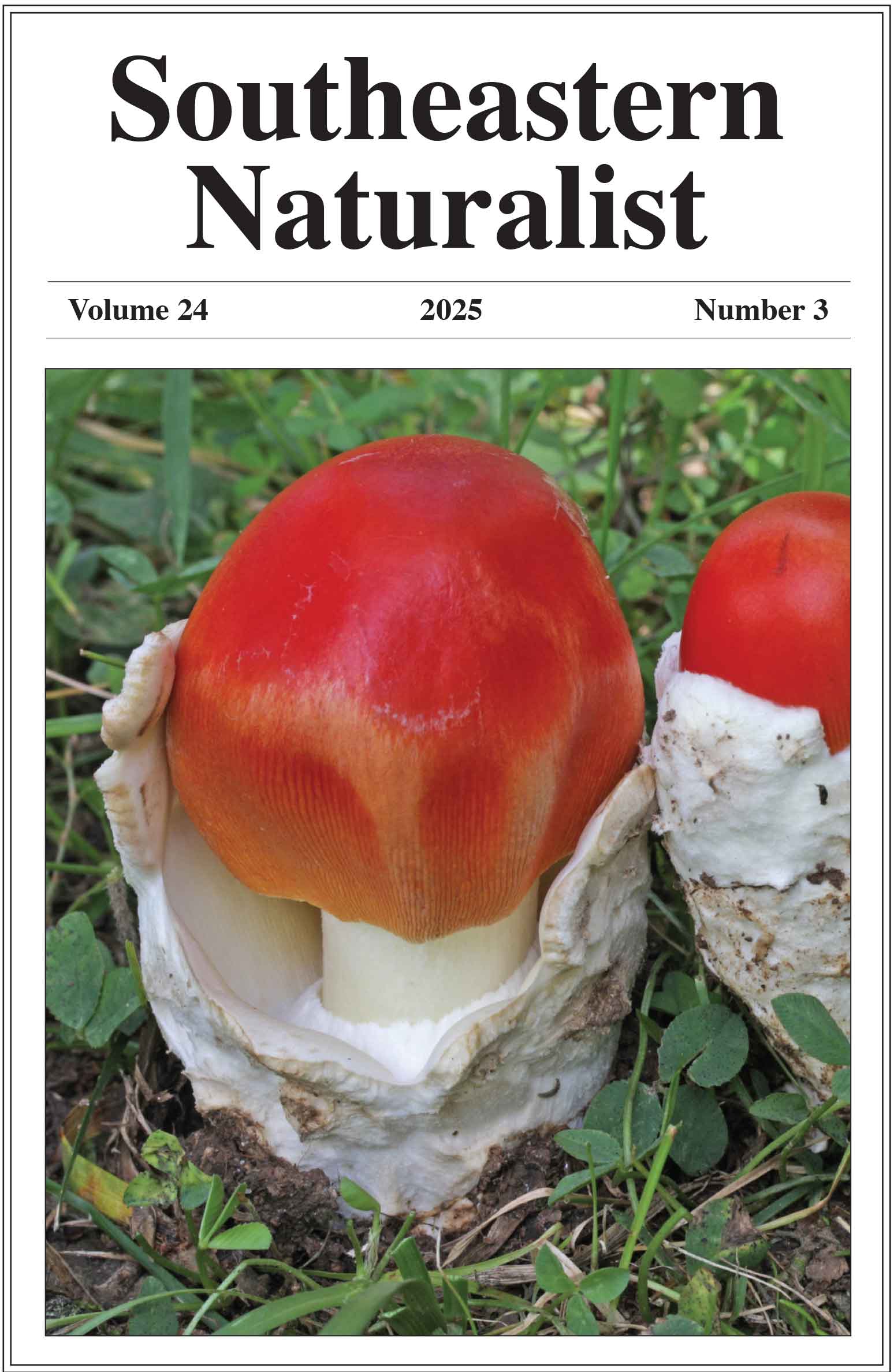Population Status and Habitat Description of a Rare Piedmont Perennial Herb, Marshallia legrandii Weakley (Oak Barrens Barbara’s-buttons)
Rachel Jessup1,*, Jodi A. Forrester1, and Lesley Starke2,3
1Department of Forestry and Environmental Resources, North Carolina State University, Raleigh, NC 27695. 2North Carolina Department of Agriculture and Consumer Services, Plant Conservation Program 1060 Mail Service Center, Raleigh NC 27699-1060. 3Current address - Virginia Department of Conservation and Recreation, Natural Heritage Program, 600 East Main Street, 24th Floor, Richmond, VA 23219-2094. *Corresponding author.
Southeastern Naturalist, Volume 23, Issue 2 (2024): 212–230
First published early online: 9 June 2024
Abstract
Marshallia legrandii (Oak Barrens Barbara’s-buttons) is a critically imperiled perennial herb in North Carolina and Virginia’s Piedmont region. We completed a flowering census of this species at 2 of its 3 known populations in 2021, and again at the largest of those measured populations in 2022. We compared flowering density with canopy openness at both sites. At the largest population, we also measured competing vegetation, soil properties, and Oak Barrens Barbara’s-buttons density to describe its habitat. Here, we also implemented an experimental augmentation of Oak Barrens Barbara’s-buttons to monitor planting survival and growth under different light environments. We found that Oak Barrens Barbara’s-buttons can flower under a broader range of canopy openness than previously believed. In addition to light, we found that competing vegetation, soil temperature, and soil moisture are important predictors of flowering success. Survival of augmented Oak Barrens Barbara’s-buttons was nearly 90%, and 28–42% of plants bloomed 2 years after planting.
![]() Download Full-text pdf (Accessible only to subscribers. To subscribe click here.)
Download Full-text pdf (Accessible only to subscribers. To subscribe click here.)
Access Journal Content
Open access browsing of table of contents and abstract pages. Full text pdfs available for download for subscribers.
Issue-in-Progress: Vol. 24( 4) ... early view
Check out SENA's latest Monograph and current Special Issue in progress:













 The Southeastern Naturalist is a peer-reviewed journal that covers all aspects of natural history within the southeastern United States. We welcome research articles, summary review papers, and observational notes.
The Southeastern Naturalist is a peer-reviewed journal that covers all aspects of natural history within the southeastern United States. We welcome research articles, summary review papers, and observational notes.